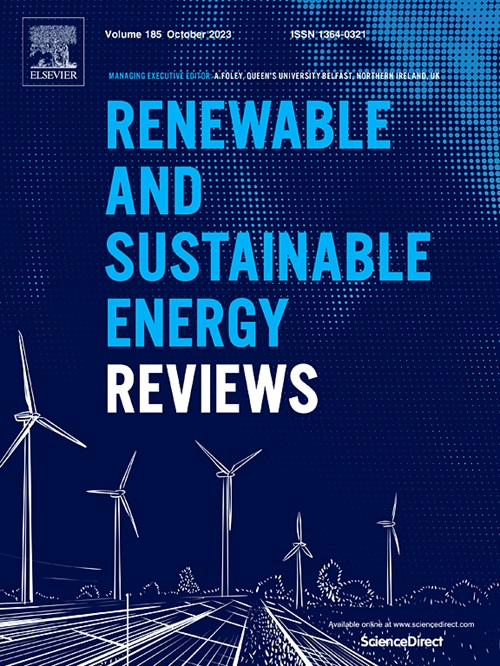Repurposing decommissioned wind turbine blades: A circular economy approach to sustainable resource management and infrastructure innovation
IF 16.3
1区 工程技术
Q1 ENERGY & FUELS
引用次数: 0
Abstract
Wind energy's rapid growth has led to a significant challenge with decommissioned wind turbine blades (DWTBs), whose complex composite materials are difficult to recycle, and these DWTBs often end up in landfills. This paper proposes a sustainable solution by repurposing DWTBs as structural components for Highway Overhead Sign Structures (OSSs). The high strength-to-weight ratio and durability of DWTBs offer substantial economic, environmental, and structural benefits. Economic analysis shows a 73 % reduction in raw material costs for OSS, with significant savings in steel and concrete. Environmentally, repurposing DWTBs will reduce CO2 emissions by 242 tons per 40-foot span structure, supporting global net-zero goals. The feasibility is validated through technical assessments, design adaptations, regulatory considerations, and experimental demonstration. By integrating DWTBs into infrastructure projects, this study advances circular economy practices and provides a viable solution for managing wind turbine blade waste, conservation of resources, and ultimately contributing to sustainable infrastructure development.

求助全文
约1分钟内获得全文
求助全文
来源期刊

Renewable and Sustainable Energy Reviews
工程技术-能源与燃料
CiteScore
31.20
自引率
5.70%
发文量
1055
审稿时长
62 days
期刊介绍:
The mission of Renewable and Sustainable Energy Reviews is to disseminate the most compelling and pertinent critical insights in renewable and sustainable energy, fostering collaboration among the research community, private sector, and policy and decision makers. The journal aims to exchange challenges, solutions, innovative concepts, and technologies, contributing to sustainable development, the transition to a low-carbon future, and the attainment of emissions targets outlined by the United Nations Framework Convention on Climate Change.
Renewable and Sustainable Energy Reviews publishes a diverse range of content, including review papers, original research, case studies, and analyses of new technologies, all featuring a substantial review component such as critique, comparison, or analysis. Introducing a distinctive paper type, Expert Insights, the journal presents commissioned mini-reviews authored by field leaders, addressing topics of significant interest. Case studies undergo consideration only if they showcase the work's applicability to other regions or contribute valuable insights to the broader field of renewable and sustainable energy. Notably, a bibliographic or literature review lacking critical analysis is deemed unsuitable for publication.
 求助内容:
求助内容: 应助结果提醒方式:
应助结果提醒方式:


